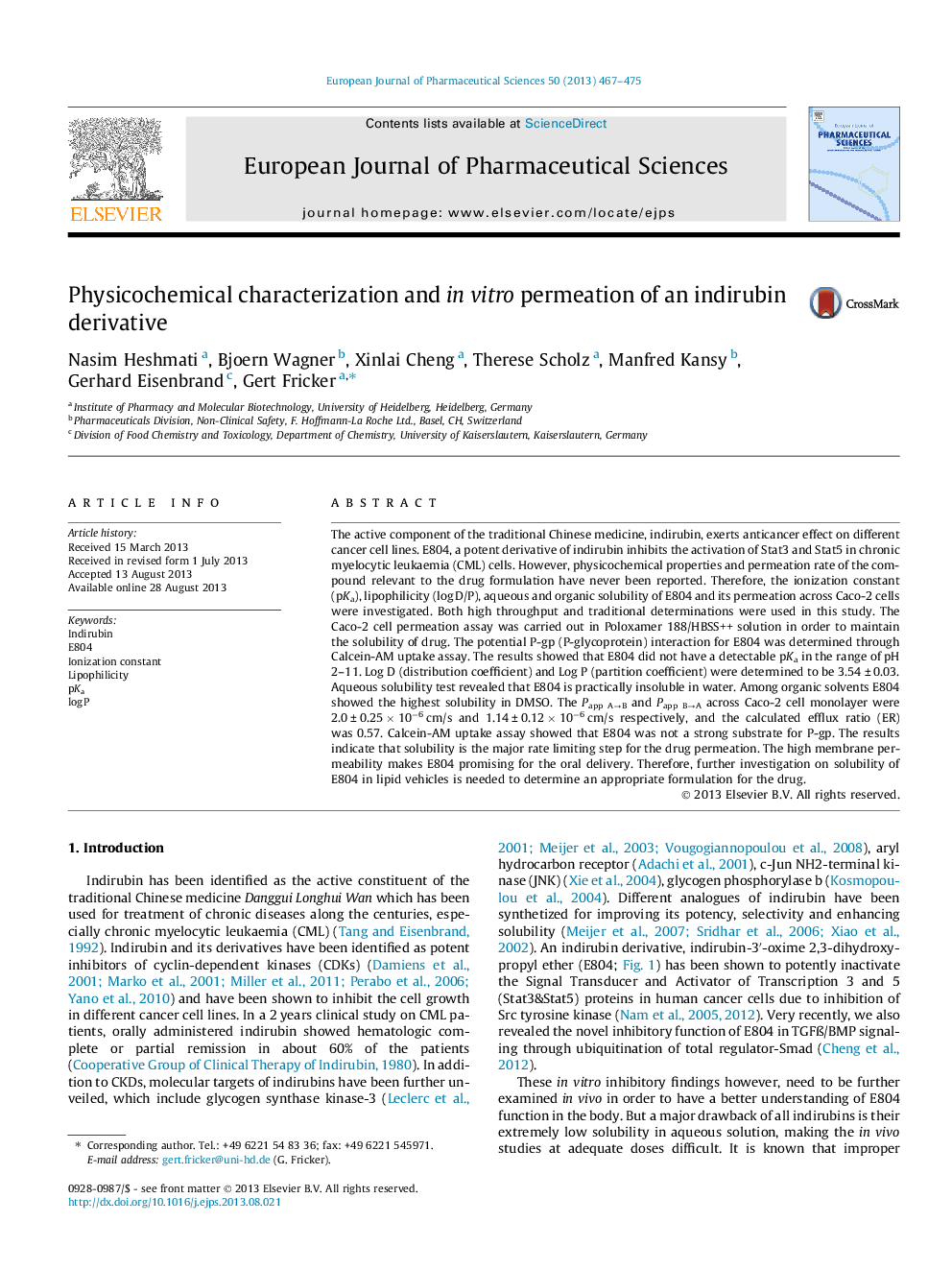| Article ID | Journal | Published Year | Pages | File Type |
|---|---|---|---|---|
| 2480730 | European Journal of Pharmaceutical Sciences | 2013 | 9 Pages |
The active component of the traditional Chinese medicine, indirubin, exerts anticancer effect on different cancer cell lines. E804, a potent derivative of indirubin inhibits the activation of Stat3 and Stat5 in chronic myelocytic leukaemia (CML) cells. However, physicochemical properties and permeation rate of the compound relevant to the drug formulation have never been reported. Therefore, the ionization constant (pKa), lipophilicity (log D/P), aqueous and organic solubility of E804 and its permeation across Caco-2 cells were investigated. Both high throughput and traditional determinations were used in this study. The Caco-2 cell permeation assay was carried out in Poloxamer 188/HBSS++ solution in order to maintain the solubility of drug. The potential P-gp (P-glycoprotein) interaction for E804 was determined through Calcein-AM uptake assay. The results showed that E804 did not have a detectable pKa in the range of pH 2–11. Log D (distribution coefficient) and Log P (partition coefficient) were determined to be 3.54 ± 0.03. Aqueous solubility test revealed that E804 is practically insoluble in water. Among organic solvents E804 showed the highest solubility in DMSO. The Papp A→B and Papp B→A across Caco-2 cell monolayer were 2.0 ± 0.25 × 10−6 cm/s and 1.14 ± 0.12 × 10−6 cm/s respectively, and the calculated efflux ratio (ER) was 0.57. Calcein-AM uptake assay showed that E804 was not a strong substrate for P-gp. The results indicate that solubility is the major rate limiting step for the drug permeation. The high membrane permeability makes E804 promising for the oral delivery. Therefore, further investigation on solubility of E804 in lipid vehicles is needed to determine an appropriate formulation for the drug.
Graphical abstractFigure optionsDownload full-size imageDownload high-quality image (65 K)Download as PowerPoint slide
